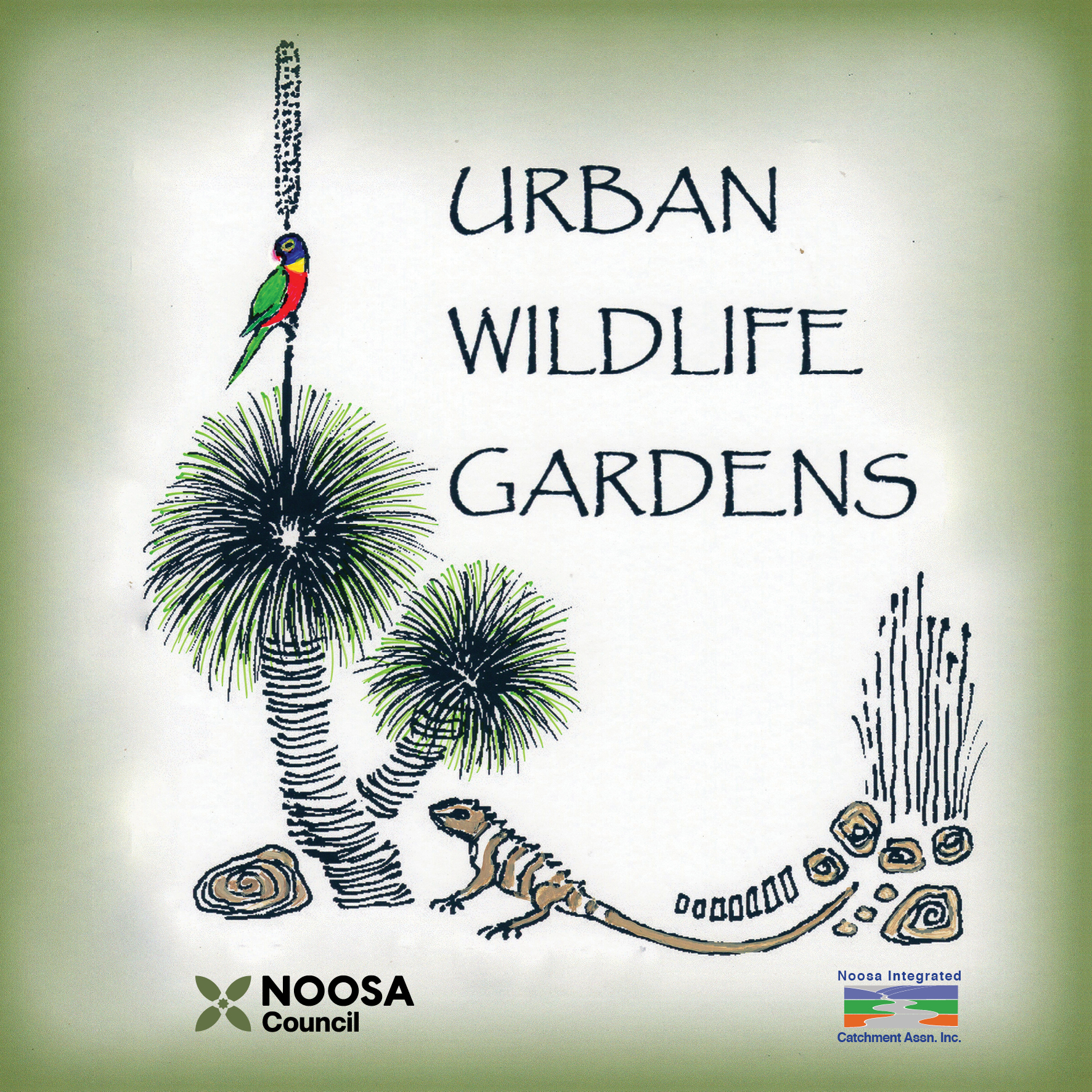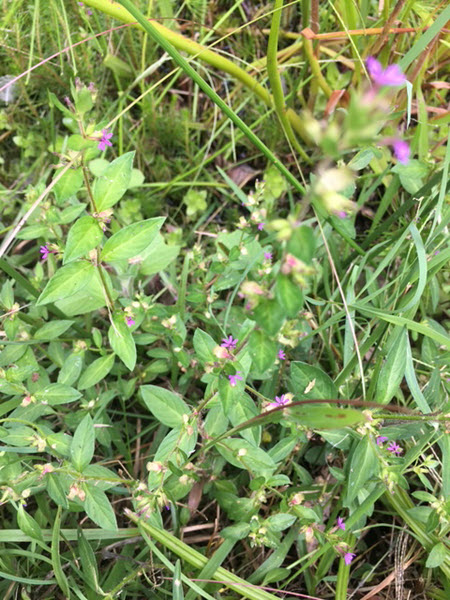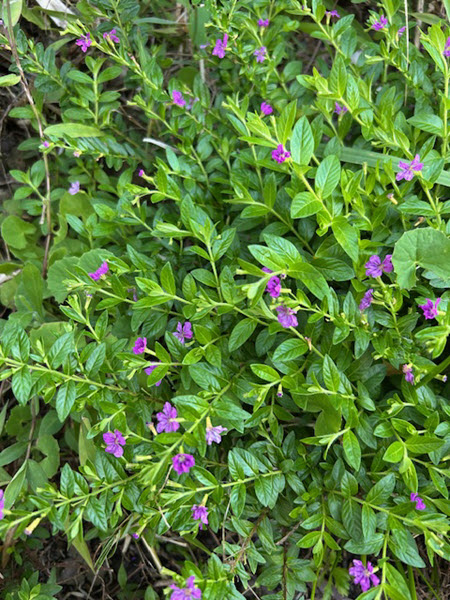Where did that weed come from?
Have you ever wondered where weeds come from, the ones that just appear in your garden that you haven’t seen before?
I have been able to identify one such weed as Cuphea carthagenensis, its common name, Colombian Waxweed. I was able identify it in Joan Heavey and Sonia MacDonald’s ‘Weeds of the Sunshine Coast’, a book that has been very helpful to me for identifying many weeds in my garden.
Colombian Waxweed has naturalised from the NSW far north coast to Bundaberg in QLD and is a common weed of pastures and moist areas. It has small violet to purple flowers and the stems are rough and sticky. This weed is in the moister grassy areas of my garden and seeds have possibly stuck to our ride on mower, which is how I think it has spread through my garden.
The thing is, where did it come from?
Some time ago I removed another species of Cuphea, which I think was Cuphea Hyssopifolia, as it self-seeded and started to form thick clumps, mainly in my lawn. I did some research and only found one site that mentioned that ‘this species will self-seed and become an environmental weed in some areas, particularly in warmer climates’. This site was situated in South Australia. But where Cuphea Carthagenensis came from is a mystery.
I’ve read that a high percentage of the weeds we have come to know and hate have been garden escapees, plants that were brought into the country as ornamentals or for pasture feed, and over many years have become the weeds of today. Unfortunately, I think this is still happening, so my suggestion is to take care when buying exotics and native plants that are not local, as they have the potential to become weedy too.
Since joining UWG, I have changed the way I garden, taking the safer option and buying local natives. This has been a bit of a journey as not all my plant selections have been successful. I’ve also learnt a lot and have had much enjoyment along the way, and I’m sure that will continue.
Unfortunately, weeds are a part of gardening but, if we can minimise their potential in our own gardens, we are on the right track.
Keron Hilton
- Cuphea Carthagenensis – Colombian Waxweed
- Cuphea Hyssopifolia – False Heather


